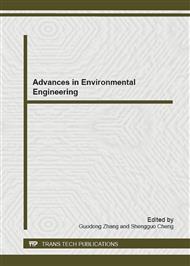p.206
p.211
p.216
p.220
p.224
p.229
p.233
p.237
p.241
Environmental Evaluation of Sanitary Landfills Establishment: Malaysian Case Studies
Abstract:
Poor management of dump-sites creates significant risks to environment and human health. Thus, sanitary landfills are required to be more effective to minimize the impacts of waste disposal. This research assesses the environmental economic evaluation focused on the economically efficiency of Malaysian sanitary landfills. Two landfills were selected based on their different operation. Landfill A incurred RM 128 million (USD 41.8 million) as the total cost within 20 operational period. Thus, it is estimated that the cost may be covered within 15 operational years. On the other hand, the total costs for Landfill B are estimated at RM 198 million (USD 64.8 million) with RM 245 million (USD 80.2 million) are expected to be obtained as profit within eight operational years. Landfill B has high initial costs of design and construction. However, the costs are covered within the first five years. This is because Landfill B introduces a new green technology namely landfill-gas power generator. This indicates that, Landfill B has stronger market competition ability as compared to Landfill A. It can be concluded that the implementation of green technology namely landfill gas harvesting system has higher impact to improve the economic value of a landfill thus making it more economical and environmentally sustainable.
Info:
Periodical:
Pages:
224-228
Citation:
Online since:
November 2012
Authors:
Price:
Сopyright:
© 2012 Trans Tech Publications Ltd. All Rights Reserved
Share:
Citation:


